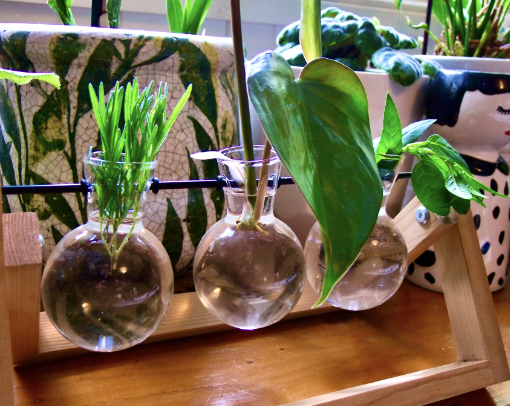October 15th, 2022Glen, about the house

Lucky strike!
One of the most exciting successes in gardening is creating a new plant from a
small growth taken from a favourite tree or shrub.
In most cases, successful propagation from cuttings is relatively simple and
straight forward, all you really need is a sharp knife, a good sharp sand mix and a
well-lit, warm spot in which to place the cuttings.
There are two basic cutting types to consider; soft or semi-ripe wood (usually
evergreen plants) and hardwood (mostly deciduous).
Although there are no hard and fast rules, particularly if you have a heated
propagating unit or glasshouse, softwood cuttings are usually taken in spring, summer
and early autumn, while hardwood ones do best in late autumn and winter.
One of your first considerations for propagating plants from cuttings is to ensure
you start them in the best possible growing medium. There are several brands of pre-bagged propagating mixes readily available at almost all gardening outlets.
But if you would rather prepare your own, one of the better cutting mixes can be
made from equal parts of coarse sand and finely crumbled peat moss.
The next, and probably, most important consideration is the environment.
Warm, slightly moist, but not damp atmosphere with adequate air movement and
permanently moist, but not wet, growing medium. Somewhat similar to that of a
heated glass house.
The next option is one of those little plastic covered greenhouses. In a warm,
sheltered and well-lit spot, they really do the trick in raising seedlings, restoring tired
indoor plants, but best of all, propagating new ones.
A 2m x 1.5m walk-in with shelves can be had from most hardware shops for
around $100.
For best results, if you intend to produce a quantity of most shrub cuttings, you
really need a propagating unit. But this needn’t mean a commercially produced one.
A large foam box covered with a sheet of opaque glass placed in a well-lit, warm spot
or a greenhouse will usually do the trick.
If you really only want to grow one or two plants from the cuttings from a friend
or neighbours’ garden you can even have success with a potful of cuttings on a well-lit
kitchen window ledge.
Even more so if you cover it with a ‘bell jar’ cut from the bottom of a 2-litre
plastic drink bottle.
With softwood cuttings, take healthy young side shoots approximately 10-15cm
long and check for progress. If there are no roots but the bottom of the stem has
callused (grown a scab), you’ll know it won’t be long before there are roots. Replace
the cutting and check again in about 8-10 days. Once they have roots 2-3 cm long
they can be potted out.
Got a gardening question? Email glenzgardens@gmail.com










